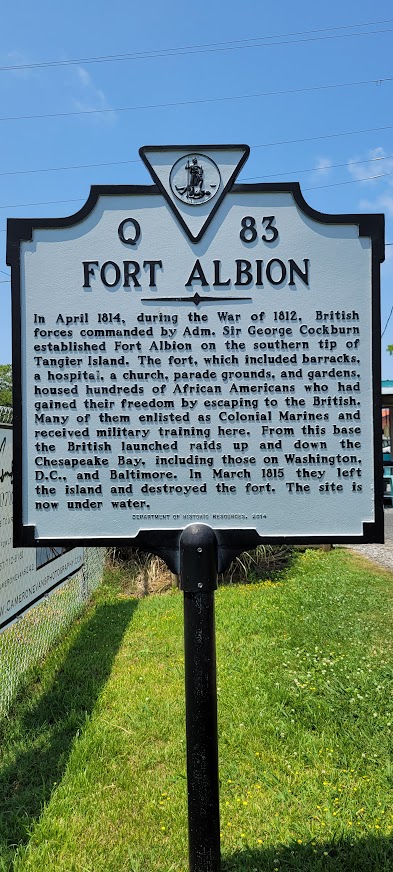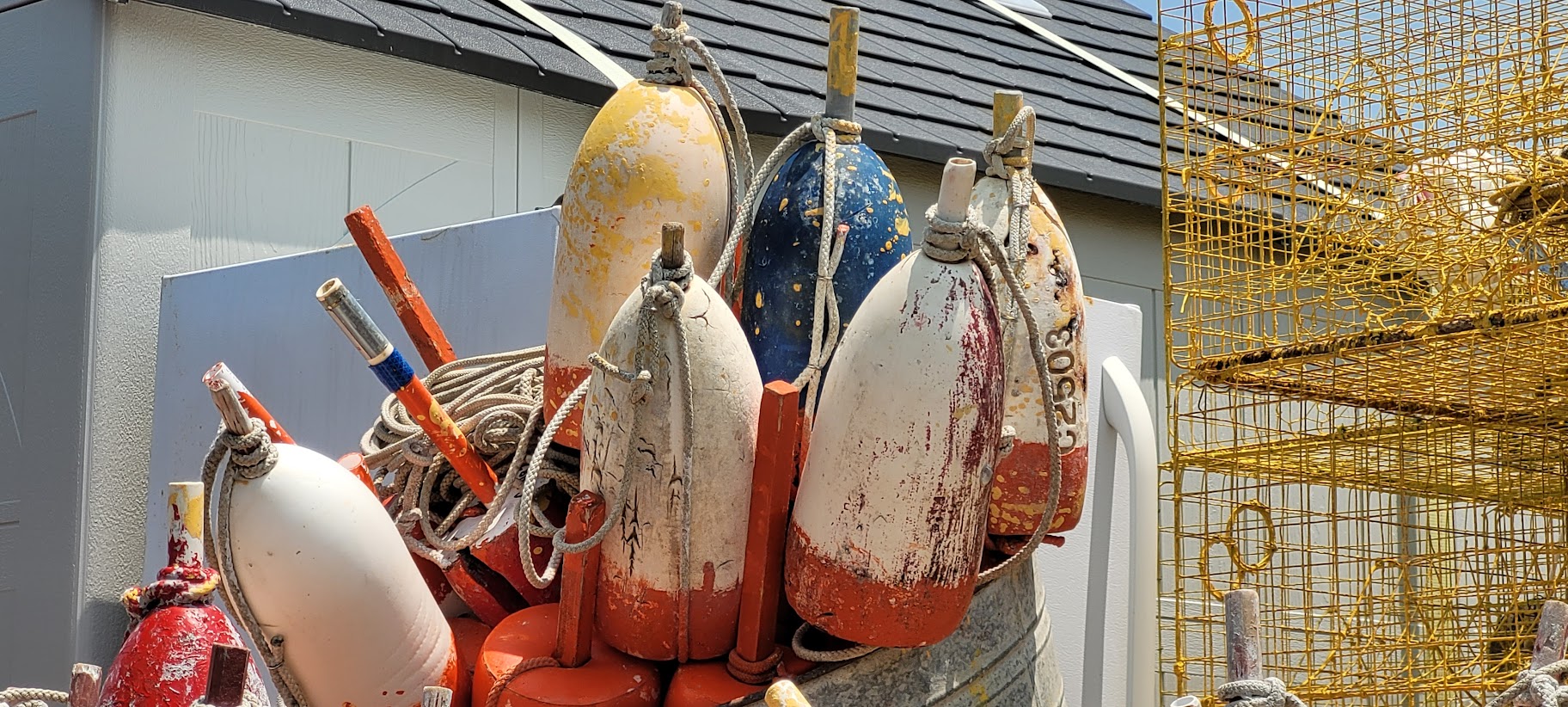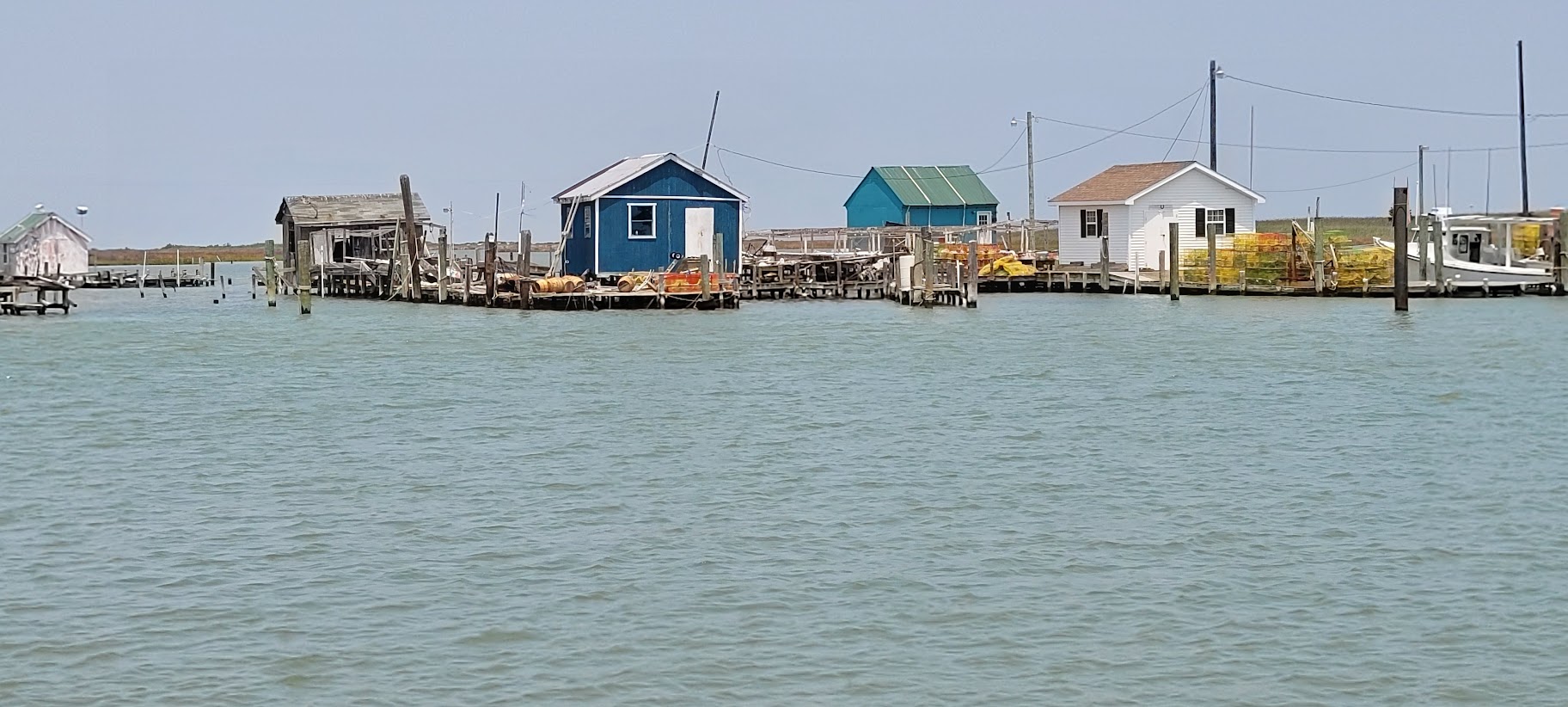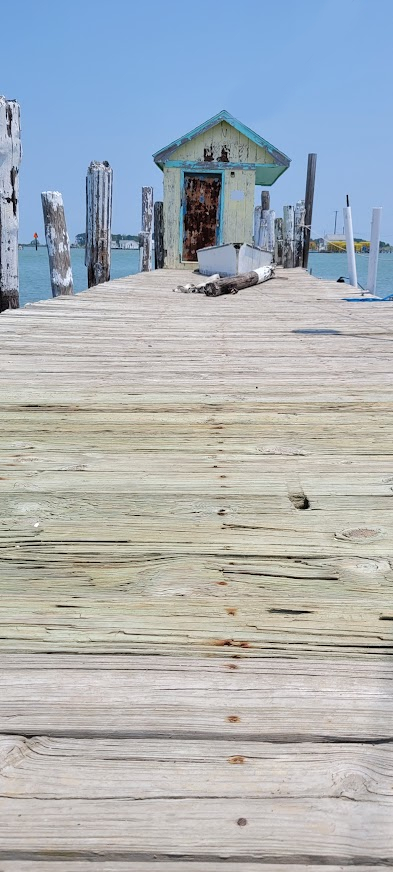Nestled amidst the Chesapeake Bay, Tangier Island stands as a captivating destination with a rich history, unique culture, and breathtaking natural beauty. This enchanting island, located off the coast of Virginia in the United States, is a place where time seems to slow down, offering visitors a glimpse into a simpler way of life. Join us as we explore the wonders of Tangier Island, an off-the-beaten-path gem that deserves a spot on your travel bucket list. The journey begins at Reedville where you embark on a ferry boat to the island. A sharp departure at 10 allows for an early lunch arrival. The boat promptly leaves at 2:30 so visitors have 3 hours to meander around the 1.2 square miles of the island. We spotted dolphins swimming near us.
Tangier Island was initially settled by European colonists in the late 17th century. The island’s first permanent English settler was believed to be John Crockett, who arrived around 1686. He was soon followed by other families, primarily from Cornwall and Devon in England. The early settlers established a community based on fishing, crabbing, and farming. Tangier Island’s isolation and its abundance of natural resources, particularly the fertile waters of the Chesapeake Bay, attracted people seeking livelihoods tied to the water. Over the years, the island’s population grew, and families with surnames such as Pruitt, Parks, Crockett, and Thomas became prominent among the island’s inhabitants. The island’s unique geographic location and the generations of families living there have contributed to the development of a distinct dialect known as Tangierese, which carries traces of the settlers’ Cornish and English origins.
Tangier Island boasts a deep-rooted maritime heritage that dates back centuries. The island’s inhabitants are predominantly watermen, whose lives revolve around the bay’s bountiful waters. Explore their fascinating way of life by visiting the Tangier History Museum, where exhibits chronicle the island’s history, its crabbing and oystering traditions, and the challenges faced by its tight-knit community.
The island displays a split personality. There are many structures in decay beyond repair yet there is quaint island charm. Prepare to be captivated by Tangier Island’s quaint and picturesque atmosphere. Visitors can stroll along narrow streets lined with charming cottages adorned with colorful flowers. Golf carts and bicycles are the preferred modes of transportation, further enhancing the island’s peaceful ambiance.
This village of 700 faces an uncertain future due to the combined effects of sea-level rise, erosion, and land subsidence. Over the past few decades, the island has experienced significant land loss, and its existence is now under threat. The main issue confronting Tangier Island is the erosion of its shoreline. The island is predominantly composed of loose sediment that is easily eroded by the waves and currents of the Chesapeake Bay. As a result, Tangier has been steadily shrinking, losing over two-thirds of its landmass since the 1850s. Furthermore, the land is affected by the rising sea levels caused by climate change. As sea levels continue to rise, the island’s vulnerability to coastal flooding and storm surges increases. The combination of erosion and sea-level rise puts Tangier at risk of becoming uninhabitable in the coming decades. Some experts say that in 50 years the island will need to be evacuated.




